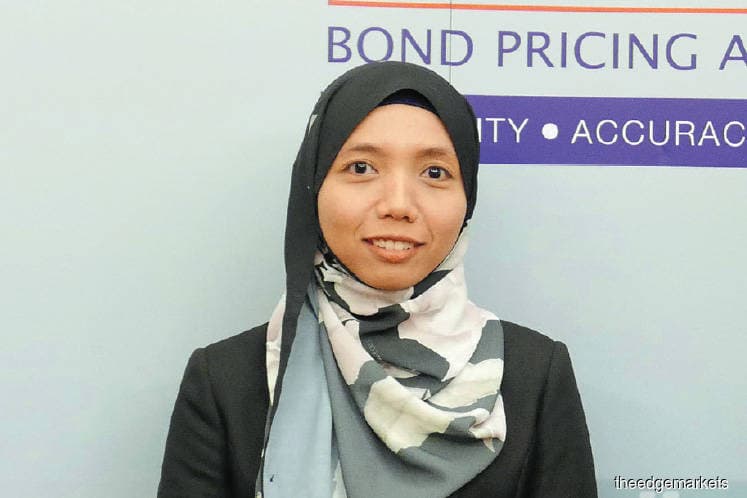
This article first appeared in Personal Wealth, The Edge Malaysia Weekly on September 16, 2019 - September 22, 2019
The first equity index to track Malaysian-listed companies with good performance in environmental, social and governance (ESG) factors — the FTSE4Good Bursa Malaysia Index (F4GBM) — went live in 2014. This subsequently led to the launch of local ESG-focused funds that used the index as a benchmark.
Now, Bond Pricing Agency Malaysia (BPAM) hopes to do the same for local ESG bonds and sukuk. In July, the agency officially launched the country’s first ESG Bond Index series, which covers Malaysian ringgit-denominated long-term bonds and sukuk that have been classified as ESG, according to several standards.
The goals are twofold: The index series can be used as a benchmark to compare its returns with other investments, whether ESG or otherwise. It can also be applied as a base for index funds in the future.
“There are a few ESG equity funds in Malaysia whose constituents are companies with good ESG practices. In the future, there could be bond funds based on ESG principles. We would like to contribute data sets to those kinds of funds and exchange-traded funds,” says BPAM head of financial engineering and research Noor Bazlina Sharifmuddin.
Currently, there is a wholesale ESG fund that tracks the F4GBM Index — the Malaysian ESG Opportunity Fund — managed VCAP Asset Managers Sdn Bhd. The others are retail funds that explicitly focus on ESG-centred equities and fixed income, launched BIMB Investment Management Bhd, whose investment universe is not restricted to Malaysia. The asset management firm launched the world’s first ESG sukuk fund last year.
BPAM’s bond index series has 15 sub-indices, which divide the constituents based on factors such as bonds or sukuk and tenure.
The launch of the bond series could meet the demand from investors, especially institutional players and family offices, which are increasingly including ESG factors in their investment process. While their interest stems from the desire to create ethical impact, ESG-focused investments have been shown to outperform conventional ones in some cases.
“When you look at the returns of our all-bond index versus those of the ESG bond index, the latter outperforms the regular bond index. If you look at plain returns, it shows that ESG bonds fare better. This could be a reason people should look at ESG bonds and sukuk,” says Noor Bazlina.
BPAM had the idea to create the bond index after observing more frequent issuances of ESG bonds and sukuk over the years. According to a report HSBC in May, green bond issuances globally had risen 45.9% year on year. Malaysia was the world’s largest sukuk issuer in the first quarter of this year and is expected to remain at the forefront of the industry, according to RAM Holdings Bhd.
“We saw that there was more interest in the ESG universe. So, we wanted to expand our data on ESG bonds. It is easier to track a segment through an index rather than checking the information of each bond,” says Noor Bazlina.
Breakdown of bond index series
All the bonds and sukuk on the index are issued or aligned with the Securities Commission Malaysia’s Sustainable and Responsible Investment (SRI) Sukuk framework, Asean Green Bond Standard, Asean Social Bond Standard, Asean Sustainability Bond Standard and the United Nations Sustainable Development Goals (UN SDGs). The proceeds from the bonds and sukuk are used for activities under the ESG and SDG umbrella.
The index is weighted market capitalisation and rebalanced monthly. As at July, there were 111 bonds on the index from nine issuers, with a total market capitalisation of RM4.05 billion. The majority of the constituents fall under the environmental category (85%), followed social (4%) and governance (11%). All of the bonds and sukuk are issued local corporates.
“Most of the issuances right now are for hydro-powered plants. We consider these green and they are issued under the SRI Sukuk framework under the environmental category,” says Noor Bazlina.
Funding activities under the social category include the support of schools. However, if the proceeds go towards supporting a UN SDG project, it comes under the governance category.
Most of the index constituents (about 90%) are sukuk, which Noor Bazlina attributes to the existence of the SC’s SRI Sukuk framework. “Maybe it is because we have a specific framework for these sukuk to come under,” she says.
In addition, most of the constituents are AA3-rated (37.6%), followed unrated (25%) and A1-rated (21.8%), based on the issued amount. Most of the tenures are long term, which are more than seven years.
Going forward, Noor Bazlina is confident of the growth of the ESG bond and sukuk market. “There will be more ESG bond and sukuk issuances and hopefully, more social and governance bonds rather than just environmental bonds. Our plan is to continue enriching the database so that more people can discover ESG-related bonds and sukuk and buy into these,” she says.
Save by subscribing to us for your print and/or digital copy.
P/S: The Edge is also available on Apple's AppStore and Androids' Google Play.